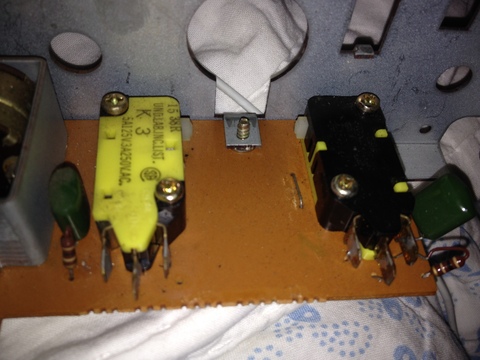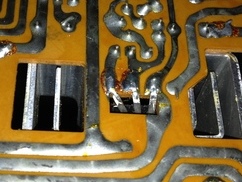|
Author
|
Topic: Broke Sankyo 500
|
|
|
|
|
|
|
|
|
|
|
|
|
|
|
Peter Gilabert
Film Handler
Posts: 40
From: San Diego, CA, USA
Registered: Jun 2017
|
 posted June 18, 2017 10:56 PM
posted June 18, 2017 10:56 PM




So, I have good news and bad news:
Today I replaced the bridge rectifier and the capacitor that's connected to it, put the projector mostly back together and...it "turned on", meaning the indicator light came on AND no scary smelling white smoke!
Alas, the motor doesn't turn over! The same motor that DOES work when I did the 'Pete from Australia' test when I hooked up a 9 volt battery directly to the motor wires! So it works and it doesn't work at the same time, heh...
The lamp doesn't light up but that doesn't worry me- it's forty years old and I'm sure needs to be replaced.
BTW, I think the sound works, by hearing the nice crackling in that mode.
So, I'm even MORE confused now.
Either my transformer is bad, a fuse that I can't find at all is bad causing the transformer not to work, or...dang it I'm stumped.
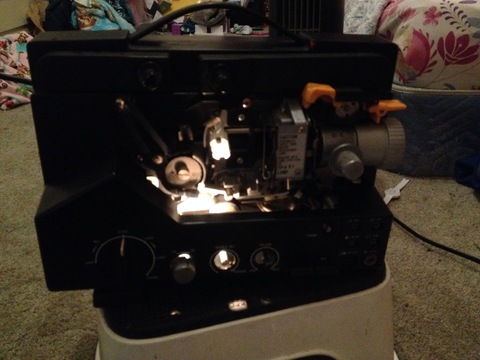
Look at it, ain't it pretty all lit up?
For the Love of God Sankyo, what are you doing to me?
| IP: Logged
|
|
Steve Klare
Film Guy

Posts: 7016
From: Long Island, NY, USA
Registered: Jun 2003
|
 posted June 20, 2017 01:47 PM
posted June 20, 2017 01:47 PM



Hi Peter,
A real bad transformer is unusual, but not impossible. There are a lot of things that are more likely than that. They are also expensive and hard to substitute, so that shouldn't be a first guess.
Most of the time there is just one fuse on these machines. If anything at all works, it's intact since it is there to power everything.
On some PC boards with fine traces you may find small board mounted fuses to not allow the large currents that the main fuse would ignore to fry them, but something as powerful as the transport motor or the amp would almost certainly be protected just by the main fuse.
With a DC motored machine, there would need to be some sort of speed regulator to keep you either at 18 or 24 FPS. Usually these are built up on a power board. This is seperate from the sound board on the machines I know.
Do you know if the board you repaired is a sound board or a power board? If there are wires to the switches that control the motor it's power. Wires to the speaker? -Sound.
I think it's likely that your motor controller is what failed in the first place, and it took out that bridge rectifier while it was at it. The rectifier could fail all by itself, but it could also be an innocent bystander!
Do you have some kind of multimeter there?
--------------------
All I ask is a wide screen and a projector to light her by...
| IP: Logged
|
|
|
|
|
|
|
|
|
|
|
|
|
|
|
|
|
|
|
|
|
|
|
|
Steve Klare
Film Guy

Posts: 7016
From: Long Island, NY, USA
Registered: Jun 2003
|
 posted June 22, 2017 03:31 PM
posted June 22, 2017 03:31 PM



Well,
An ohmmeter is kind of like an honors' class continuity tester. You can see a short circuit, an open circuit and all the shades of circuit in between.
If you put the meter in "Ohms" and touch the leads together, you will see zero or something really close. This is a short circuit.
If you take them apart you will see something like "OL". This is an open circuit.
If you touch both of them with your fingertips you will often see some large number, because walking bags of salt water which we are, we conduct electricity. (It's only a small battery: no shock!)
-moral there is when making a real measurement, keep your fingers OFF the leads!
If you attach the leads to two terminals of a switch and the switch is closed, you will see some number close to zero. If you open the switch, it will swing up past the maximum measurement possible and read "OL".
-This is what switches do: let you choose short circuit or open.
--------------------
All I ask is a wide screen and a projector to light her by...
| IP: Logged
|
|
Peter Gilabert
Film Handler
Posts: 40
From: San Diego, CA, USA
Registered: Jun 2017
|
 posted June 24, 2017 01:57 PM
posted June 24, 2017 01:57 PM




Well,
Right now I'm the Poster Child of Frustration.
While waiting for my new transistor (which may won't fix anything anyway), I went ahead and replaced two other nearby capacitor and the other rectifier.
Plugged it all in and- BACK TO BURNING WHITE SMOKE.
Shoot me now.
The new one I just put in last week is fried:
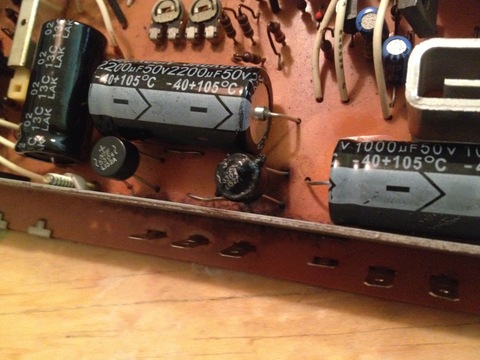
The thing is, It didn't smoke and fry anything AFTER I replaced it before, so the only explanations I have are:
1) I noticed a tiny break in the circuit line next to (the one that just burnt) that I fixed this morning with solder just before I plugged it in, meaning it would've burned last time anyway.
2) I replaced the wrong kind of two additional capacitors this morning- because they are the same- except they are both rated at 50v instead of 25v. I thought that was safe but maybe?
And just for good measure, my de-soldering pump broke.
Kinda over it, ready to throw in the towel.
| IP: Logged
|
|
|
|
|
|
|
|
|



 UBBFriend: Email this page to someone!
UBBFriend: Email this page to someone!
 Printer-friendly view of this topic
Printer-friendly view of this topic




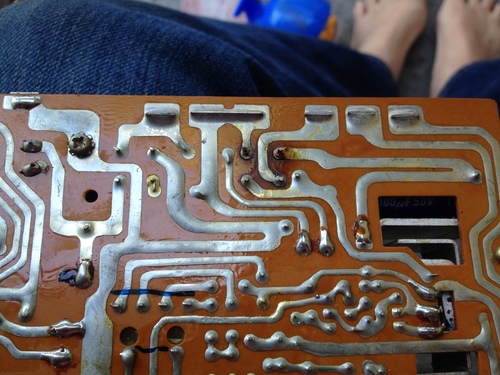
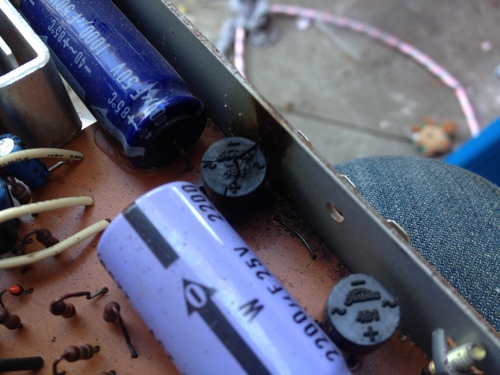

![[Smile]](smile.gif)
![[Frown]](frown.gif)


